The forest skyscraper where no one lives: huge 240-meter tower in rural Germany testing the elevators of the future
On the edge of the medieval town of Rottweil in southeastern Germany, surrounded by the Black Forest, a 250-meter skyscraper rules the land.
Considered one of the tallest buildings in the country, the TK Elevator Testturm was not built to house people, nor to be filled with rows of office desks, but rather to test the latest elevator models.
The tower was built in 2017 by engineering firm TK Elevator and houses twelve shafts where next-generation elevators are tested.
Currently being tested is TK Elevator’s MULTI system, which uses magnetic levitation, or maglev, to quickly and smoothly pull elevator cabins both horizontally and vertically.
The feature is intended to reduce waiting times for elevators in high-rise buildings.
The TK Elevator test tower in Rottwei was built to test elevator systems
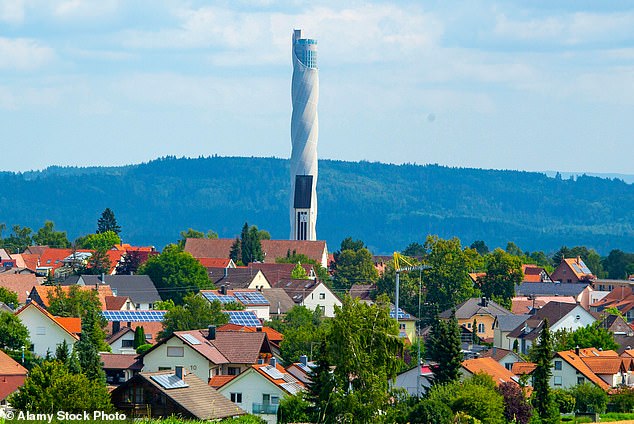
The tower stands at over 800 feet
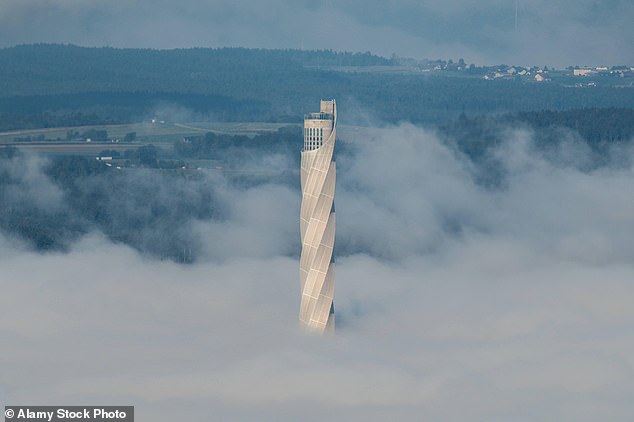
The structure is currently testing TK Elevator’s MULTI system
The building also has a facade designed to minimize vibrations caused by wind.
It is reminiscent of the floating glass elevator from the 1971 film Willy Wonka and the Chocolate Factory, based on the book by Roald Dahl.
It receives visits from engineers and architects from all over the world eager to test their cutting-edge designs, and locals consider the tower a cultural monument, as well as an industrial facility.
The structure features a viewing platform 220 meters high, allowing visitors to enjoy breathtaking views of the surrounding forest and Swiss Alps – a feature that has attracted dozens of tourists to the rural location.
The tower was built using a slipforming technique so that it grew by 4 meters on its most productive days.
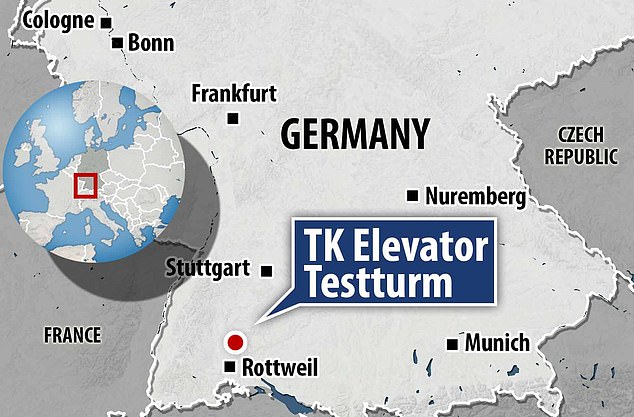
The tower is located in the middle of the Black Forest in southeastern Germany, near the town of Rottweil
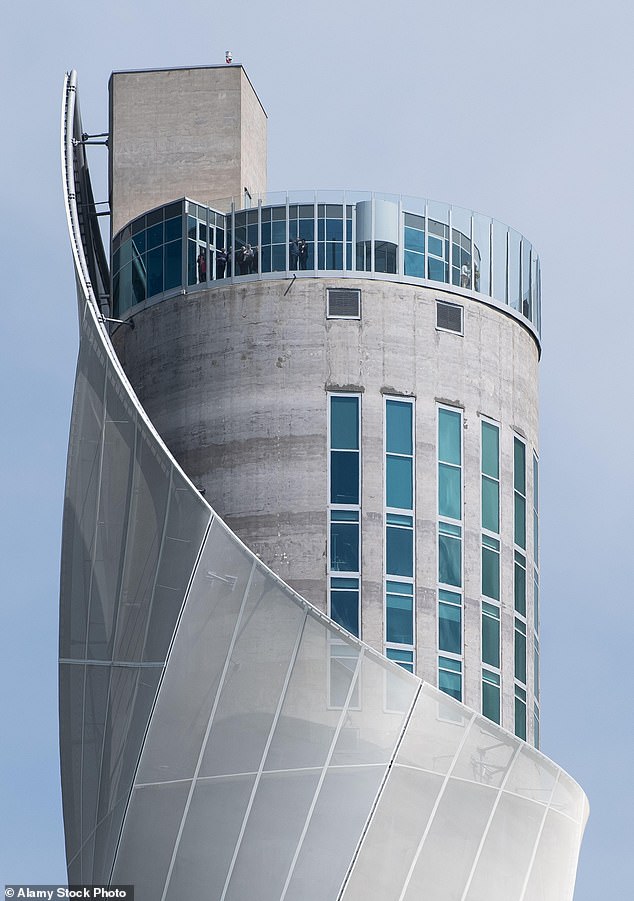
The tower has attracted several tourists because of its viewing platform that accommodates beautiful panoramic views of the surrounding forest and the Alps
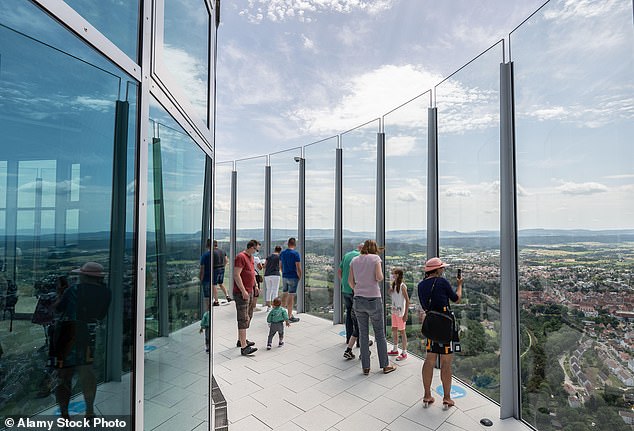
Visitors stand on the visitor platform of the Thyssenkrupp test tower

At 250 meters, the tower is the highest publicly accessible viewing platform in Germany
In addition, each of the cabins in the tower is self-propelled and uses a multi-level braking system, transferring power from the axle to the cabin and back again.
A magnetized coil running along the elevator shaft repels magnets on the outside of the cabins, allowing the cabins to float above a so-called guideway, causing a magnetic field in front of the cabin to pull it forward, while a field at the rear will add thrust.
But the Rottweil Tower is not the only one used to test new elevator technologies.
The H1 tower, built by Japanese firm Gitachi and standing 240 meters high, is testing elevators in Guangzhou, China.
Meanwhile, Kone has built test towers in Finland and China.
